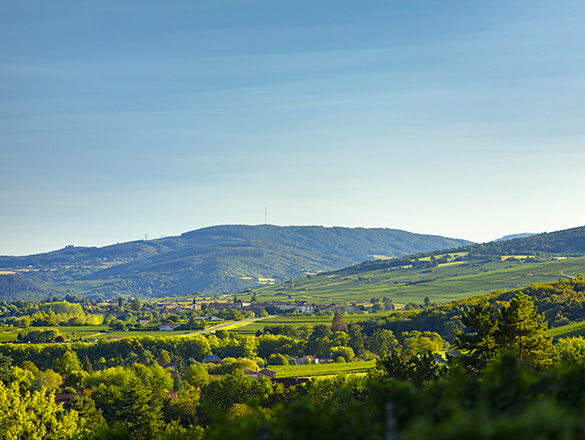
The vineyards of Bourgogne produce some great wines with a historical and international reputation. However, the region is not simply limited to its iconic appellations. In addition to its Village Premier Cru and Grand Cru AOCs, it also produces a range of wonderful Régionale and Village appellations to explore.
You will also find a full list of the Bourgogne’s Climats and lieux-dits on this page.
Check out the complete list of the 84 Bourgogne appellations.
However, your exploration has only just begun. Bourgogne wines have never before offered such high quality. Besides our range of internationally celebrated wines, try some of our lesser-known appellations where there are lots of surprises in store.
And for a fun way to find out more about the wines on offer, try out our “Which Bourgogne wine is right for me?” quiz, or check out Bourgogne Maps to take an interactive tour of the region.
Regional Appellation
VIGNOBLE DU MÂCONNAIS
31 juillet 1937
Whites - Chardonnay.
Reds and rosés - Gamay.
Area under vine:
Whites: 57.58 ha
Reds and rosés: 9.83 ha
Annual harvest:
Whites: 325,213 bottles
Reds and rosés: 46,343 bottles
Source: 5-year average, 2017-2021
An additional geographical denomination that is part of the Régionale Mâcon appellation in the Mâconnais. According to the 2005 specifications rules, the name Mâcon-Igé refers to white, red, and rosé wines grown within a defined area in the village of Igé.

Mâcon-Igé whites are a lovely sustained yellow color with sparkling reflections. They are expressive on the nose with aromas of mandarin zest, these fresh notes accompanied in a second phase with notes of orchard blossom and tropical fruit like figs and dates. In the mouth, the structure is very smooth, almost sweet, but with none of the heaviness that would detract from its overall balance.
Red wines from the terroir of Igé represent the character of Mâcon reds. With an intense garnet color, deeper in sunny vintages, from first taste, they indicate lots of body marked by vanilla, cinnamon, and red fruit compote or even jam. Similarly, the tannins, which are present but well integrated, make it vigorous and indulgent in the mouth.

White: with its sunny aromatic character and smoothness on the tongue, this wine makes a natural pairing with all kinds of goat cheeses, such as the traditional AOC Mâconnais or its neighboring Charolais for a terroir-themed aperitif. Follow with grilled chicken supremes or mixed fried river fish. This white wine will also bring out the best in local freshwater fish dishes, such as carp with white wine, or pôchouse from Verdun-sur-le-Doubs (a river fish stew cooked in white wine).
Serving temperatures: 10-11°C as an aperitif, 11-12°C with food.
Red: with its aromatic opulence and fleshy mouth, this wine is a remarkable companion with more fibrous meat dishes such as duck ravioli or braised côte de boeuf (ideally from the Charolais). For wine-marinated dishes, choose a hot year such as 2018, which will help soften the acidity of the sauce in a boeuf bourguignon or a snail meurette. To finish a meal, try a local washed-rind cow’s milk cheese that’s not too old, or something drier like a Palet de Bourgogne or a Cendré de Vergy, to match the freshness of the Gamay.
Serving temperature: 14-15°C.

To the north, the Mâcon-Igé appellation meets the Mâcon-Azé appellation, whilst its southern end meets the edge of the village of Verzé and the Mâcon-Verzé appellation. The main cooperative cellars were opened in this valley in the 1920s and 1930s.

From Igé heading south, the landscape widens out into a bowl-shaped area that extends along well-defined limits. To the west, the vines are planted facing the rising sun at between 260 and 420 meters.
In the alignment of the great limestone bedrock of Cruzille-Azé-Verzé, the subsoil was formed through the Middle and Upper Jurassic, between 150 and 170 million years ago. On the long, gently sloping western hillside, red limestone, which is perfect for growing the Gamay grape, is replaced by clay marl, and then soft, chalky limestone on the eastern side, which is steeper as it goes up to the woods.
